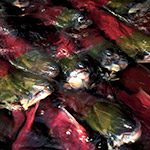Preeminent Physicist Edward Witten to Speak at UC San Diego March 18
Edward Witten, Ph.D., regarded by many as the world’s greatest living physicist, will speak at the University of California, San Diego on March 18 at 3:30 p.m., as part of the annual Kyoto Prize Symposium. To register for the free talk, which is open to the public, please visit: kyotoprizeusa.org.















